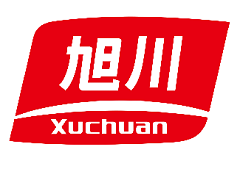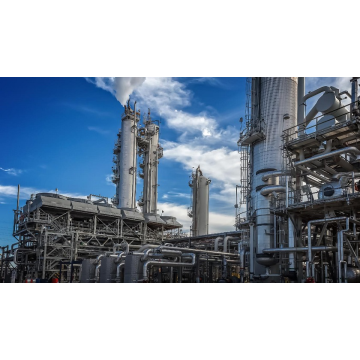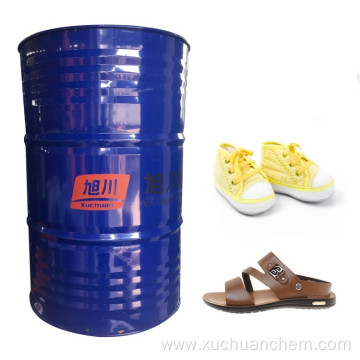2 Acrylic modification of waterborne polyurethane resin
Compared with polyurethane resins, polyacrylate products show good performance in weather resistance, water resistance, solvent resistance, gloss retention, etc. However, polyurethane resins have outstanding performance in terms of strength, elasticity and adhesive properties, and therefore polyacrylic acid. Ester and polyurethane have good complementary properties. According to this feature, various methods have been used to modify acrylates for waterborne polyurethane emulsions. Among them, the better ones are the sequential synthesis of core-shell composites containing both polyurethane and polyacrylate. Latex particles, the latex particles organically combine the advantages of PU and PA, and can significantly improve the water-resistant, solvent-resistant and weather-resistant properties of waterborne polyurethane.
This kind of composite emulsion is often prepared by first preparing an aqueous polyurethane dispersion as a seed emulsion, and then adding an acrylate monomer for radical polymerization. The hydrophobic acrylate tends to dissolve in the polyurethane micelles of the PU seed emulsion to form a core. The nuclear part of the shell structure. In order to improve the compatibility between the two phases, it is generally required to introduce unsaturated double bonds at the end of the molecular chain through the compound such as hydroxyethyl acrylate (HEA), diammonium adipate (ADH) during the synthesis of the PU seed emulsion. OR - NH 2 group, which makes the PU seed emulsion has a chemical bond between PU and PA in the PU / PA composite latex particles formed after free radical polymerization of acrylates; PU seed emulsion with -NH 2 group end capped It does not react with acrylates in the aqueous phase. It only reacts when the water volatilizes to form a film - the NH 2 structure reacts with the CO of the diacetone acrylamide (DAAM) in the core to form an imine structure, making the PU terminal and the acrylate side chain Chemically crosslinked structures are formed. Dong et al.[17] studied and analyzed the effect of the chemical bond cross-linking structure between the two different core-shells on the performance of the composite emulsion. The results showed that the average particle size of the composite latex particles formed by the core-shell cross-linked system with an imine structure was relatively small. The small size distribution range is narrow, and the average particle size of the latex particles after the cross-linked structure formed by the unsaturated double bond-terminated PU emulsion and the acrylate is relatively large, and the particle size distribution is also relatively wide. The presence of chemical bond-crosslinking structures between the core and the shell also has an important influence on the composition of the emulsion coating. MHirose et al. [18] studied the coating structure of non-crosslinked and crosslinked composite emulsions and found that The chemically cross-linked emulsion coating surface has a high PU content and its thickness is greater than the average thickness of the latex shell, which indicates that the PU phase undergoes a large reorientation during film formation; and for chemically crosslinked The structure of the emulsion coating, the surface structure is relatively complex, PU layer is thin, but the overall performance is better than the coating without cross-linked structure, the contact angle test with water as solvent found that the latter is greater than the former, indicating better water resistance . However, regardless of the existence of a crosslinked structure, the water resistance and solvent resistance of the emulsion coating film can be improved, the film formation speed can be increased, and the film formation temperature can be reduced.
The main problem in the preparation of the above composite emulsion is that the unsaturated oil-soluble monomers such as acrylate or styrene cannot completely initiate polymerization in the PU seed latex particles, and some of them are homopolymerized in the aqueous phase or polymerized on the surface of PU seed latex particles. Causes cross-linking between the colloidal particles to initiate the gel. Hyuk Kim et al. [19] found that the zeta potential of the emulsion decreased after the seed emulsion free-radical polymerization was performed, and that the zeta potential reduction phenomenon became more pronounced as the DMPA content increased. This shows that the surface anionic groups are embedded in acrylic homopolymers or A-g-PU copolymers, and a large part of acrylic monomers are not polymerized in the PU seed latex but on the surface thereof. It also shows that the grafting reaction between the core shells is carried out by abstracting N—H in hydrogen bonds. In response to this problem, Xiao Jijun [20] and others investigated the effect of different initiators on the properties of this core-shell structure. It was found that using oil-soluble initiator A IBN was better than persulfate-based water-soluble initiators because oil The soluble initiator initiates polymerization only in the seed latex particles. In addition, the properties of PU seed emulsions also influence the properties of these emulsions and their coating films to a large extent. At the same time, Hyuk Kim et al. also studied the effect of hard segment content in the PU seed emulsion on the core-shell structure when acrylic monomer MMA was free-radically polymerized in a PU seed emulsion. It was found that the MMA swelled more easily to the seed latex as the hard segment content increased. Among the granules, the probability of initiating polymerization in the PU latex particles increases, and at the same time as the IPD I content increases, the particle size distribution of the MMA-g-PU latex particles becomes narrower and the average particle size increases. In addition, when the IPD I content is relatively small, At 19 6% (mass fraction), the emulsion particle size distribution is wider and the particle size is smaller than that of the original PU emulsion. This indicates that during the free radical polymerization of the seed emulsion, other particles with smaller particle sizes are formed. The amount of MMA swollen into PU latex particles is too small to significantly increase the particle size, which in turn makes the average particle size decrease, and it is difficult to obtain a composite emulsion with a clear core-shell structure and excellent properties; Ur ˇ ska ˇ Sebenik et al. [21] studied the influence of the relative molecular weight of the soft segment, ie the oligomeric polyol, on the properties of the core-shell structural composite emulsion in the PU seed emulsion, and found that with the increase of the relative molecular mass of the oligomeric polyol, the PU seed The ability of the colloidal particles to absorb acrylates increases, allowing more acrylates to swell into their middle to polymerize to form latex particles with a pronounced core-shell structure. Li Keyou et al.[22] studied the effect of different feeding methods on the properties of such polyurethane-acrylate core-shell structures, and found that the semi-continuous feeding method does not have a continuous core-shell phase separation of latex particles obtained by continuous feeding. The PU content is also low, mainly because some acrylic esters penetrate into the PU macromolecules when the semi-continuous feeding method is adopted, and some of the grafted polymers formed after the copolymerization infiltrate each other, reducing the interaction between the two-phase interfaces. The compatibility between the two phases is improved so that the PU macromolecules that diffuse into the outer layer during the polymerization are relatively reduced. On the other hand, PU latex particles are starved to acrylate during continuous feeding, and the amount of self-polymerizing monomer inside the particles is large, and the amount of PU macromolecules grafted and polymerized is small.
3 Interpenetrating polymer network (IPN) modification of waterborne polyurethane resin
The IPN polymer is a unique polymer structure formed by permanent entanglement or interpenetration of macromolecular chains with two or more polymer networks. When synthesized in a sequential manner, latex particles with a core-shell structure can be obtained [ twenty three ] . The IPN type polyurethane-acrylate core-shell structure is generally used to introduce unsaturated double bonds in the PU molecular chain, self-emulsifying to form seed latex particles, and then PU seeds before introducing acrylate or styrene for free-radical polymerization to nucleate. The unsaturated double bonds in the PU molecular chains in the latex particles are radically polymerized, so that the PU molecular chains are crosslinked to form the network structure I, and then the acrylate or styrene is swelled in the seed emulsion to initiate polymerization, forming a network structure II , Forced interpenetration between the two, and the formation of the interpenetrating network in the form of a structure, due to the often-sequential synthesis method, so that the latex particles have a core-shell structure.
In general, this kind of IPN type composite emulsion with a urethane-acrylate core-shell structure is prepared in two common methods: one is to synthesize a seed emulsion that is self-emulsified with an unsaturated double-bonded PU molecular chain to form a seed emulsion, and then added Free radical polymerization forms a cross-linked network between PU molecular chains to form a network structure I; Add an acrylate to form a second radical polymerization to form network II; Another method is to use an unsaturated double-stranded chain extension. Agents, unsaturated double bonds are introduced into the PU molecular chain, seed emulsions are formed after self-emulsification, and initiators are added to initiate double bond polymerization to form a network structure I between the PU molecular chains, and then an acrylate is added for polymerization to form the network II.
The interpenetrating network structure due to the cross-linking between the PU macromolecular chains and the interpenetrating structure with the acrylate makes the emulsion coating in terms of water resistance, solvent resistance, weather resistance, adhesive properties and other types of PU/ The PA composite emulsion shows better performance than other composite emulsions, and also has the advantages of fast film formation and low film formation temperature.
Liu Jianhong [24] used maleic anhydride and diethanolamine for ring-opening polymerization to obtain a chain extender containing both a carboxyl group and an unsaturated double bond. Its structural formula is:
O
↑
HOOC-C=CCN C2H4OH
C2H4OH
Ren Xiangzhong and others used this type of chain extender to synthesize water-borne polyurethane and methyl methacrylate in a non-initiator system in the presence of Cu 2 + to undergo a graft copolymerization reaction to obtain a polyurethane-acrylate composite emulsion having a core-shell structure. . The unsaturated double bond in the chain extender exists in the form of a pendant group on the PU macromolecular chain, and the PU seed emulsion having this structure initiates the polymerization in the presence of a persulfate initiator and can also give rise to intermolecular chaining of the PU molecule. The linked seed emulsion, followed by the addition of acrylates was polymerized in this emulsion to give a composite emulsion with an interpenetrating structure.
Wang Guiyou et al.[26] studied the properties of the polymer based on the chemical bond between the polyurethane-acrylate interpenetrating network structures, and found that the two networks can improve the compatibility between the two phases when they are chemically bonded. The degree of interpenetration can significantly improve the mechanical properties of the polymer. JS Lee et al. [27] also used this method to synthesize a PU/PS core-shell composite emulsion with an interpenetrating network structure, and examined the morphology of the latex particles and the water and solvent resistance and mechanical properties of the emulsion coating. The degree of phase separation, that is, the ability to obtain phase separation of the core-shell structure depends on the density of the chemical bonds between the two interpenetrating networks, and the test results on the dynamic mechanical properties and solvent resistance of the coating films show that A large number of chemical bonds exist between the core and the shell of the synthesized latex particles synthesized by the methods, and the degree of phase separation between PU and PS, the core and the shell, decreases as the crosslink density between the two increases. The boundary was ambiguous, and the overall performance of the emulsion was good. At the same time, it was found that the water absorption rate of the coating decreased with the increase of the PS content, but it increased with the increase of the relative molecular mass of the PU prepolymer.
4 Conclusion
The purpose of waterborne polyurethane modification is to improve some of the deficiencies of the resin itself or to improve the overall performance of the resin in order to expand its scope of use. Waterborne polyurethanes in foreign countries are in a leading position in terms of theoretical basis, practical application, industrial production, etc. Domestic research and development in this area started relatively late, but in recent years research on this area has also been fruitful. The authors focused on waterborne polyurethanes. Some performance deficiencies have also carried out more in-depth research, and have made some practical research results.

Source: Thermosetting resin network







